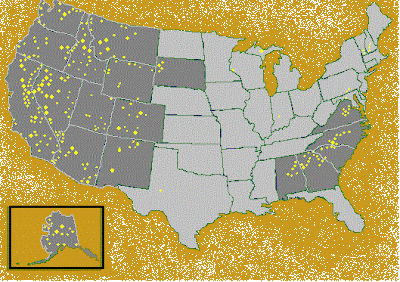How to Tell if Gold Is Real
By American standards, fake gold is anything less than 10 Karats. If you're wondering whether your gold is real, the most reliable way to find out is to take it to a certified jeweler and have it tested. If you want to check for yourself, here's a list of tests you can conduct to tell if your gold is real.
Visual Inspection
Inspect the piece for official markings. A stamp will indicate either fineness (1-999 or .1-.999) or karat (10K, 14K, 18K, 22K or 24K). Anything less than 10K is not considered to be real gold. A magnifying glass will make this easier.
An older piece might not have a visible marking due to wear.
Counterfeit pieces can often have a marking that appears authentic; more testing may be needed either way.
Look for noticeable discoloration. It is important to check for discoloration in areas that face constant friction (typically around the edges). If the gold seems to be wearing off and showing a different metal beneath it, you probably have a piece that is only gold plated.
Bite Test
We have all seen a movie where a prospector bites down on a piece of gold to test it. We also see Olympic athletes bite on their “gold” medal when they receive it. Whether that is of any use is another story altogether.Bite down on your gold.
Examine your gold for any markings. In theory, real gold will show indents from your teeth; deeper markings indicate purer gold.
This is actually not a recommended test, as you can damage your teeth. Not to mention that lead is even softer than gold and gold-plated lead will appear to be gold when you bite it.
Magnet Test
There are very few metals denser than gold. The density of pure 24K gold is about 19.3 g/ml, which is much higher than most other metals. Measuring the density of your items can help you determine if your gold is real. As a rule of thumb, the higher the density, the purer the gold. Make sure to perform the density test on gold that has no gemstones of any kind attached. See the warnings below for important information about the density test.
Weigh your piece of gold. A jeweler can normally do this for you for free if you don’t have your own scale. You will need the weight in grams.
Fill a vial with water.
It’s helpful if the vial has millimeter markings on the side, since that will make it easier for you to read the measurements for this test
It doesn’t matter how much water you use as long as you don’t fill the vial to the top, since the water level will rise once you immerse the gold in it.
It’s also important to note the exact amount of the water level before and after immersion.
Place your gold in the vial. Take note of the new water level and calculate the difference between those two numbers in milliliters.
Use the following formula to calculate density: Density mass/volume displacement. A result close to 19 g/ml indicates either real gold, or a material with a density similar to gold. Here is an example calculation:
Your gold item weighs 38 g and it displaces 2 milliliters of water. Using the formula of [mass (38 g)]/[volume displacement (2 ml)], your result would be 19 g/ml, which is very close to the density of gold.
Bear in mind that different gold purity will have a different g/ml ratio:
14K – 12.9 to 14.6 g/ml18K yellow
15.2 to 15.9 g/ml18K white
14.7 to 16.9 g/ml
22K – 17.7 to 17.8 g/ml
Ceramic Plate Test
This is an easy way to tell if your gold is fool’s gold. Bear in mind that your item may end up scratched.
Find an unglazed ceramic plate to use. If you don’t have this, you can purchase a random piece of unglazed ceramic from a home improvement store.
Drag your item across the surface. A black streak means your gold is not real, whereas a gold streak indicates your item is genuine.
Nitric Acid Test
This is where the term “acid test” comes from, and is a great way to test your gold. However, due to the difficulty is acquiring the acid, and the inherent safety risks of doing this in your home, it may be best to leave this test to a jeweler.
Place your piece of gold in a small stainless steel container.
Put a drop of nitric acid on your gold and watch for any resulting reaction to the acid.
A green reaction indicates your item is either a base metal or gold plated.
A milk-colored reaction would indicate gold-plated sterling silver.
If there is no reaction, you mostly likely are dealing with real gold.













